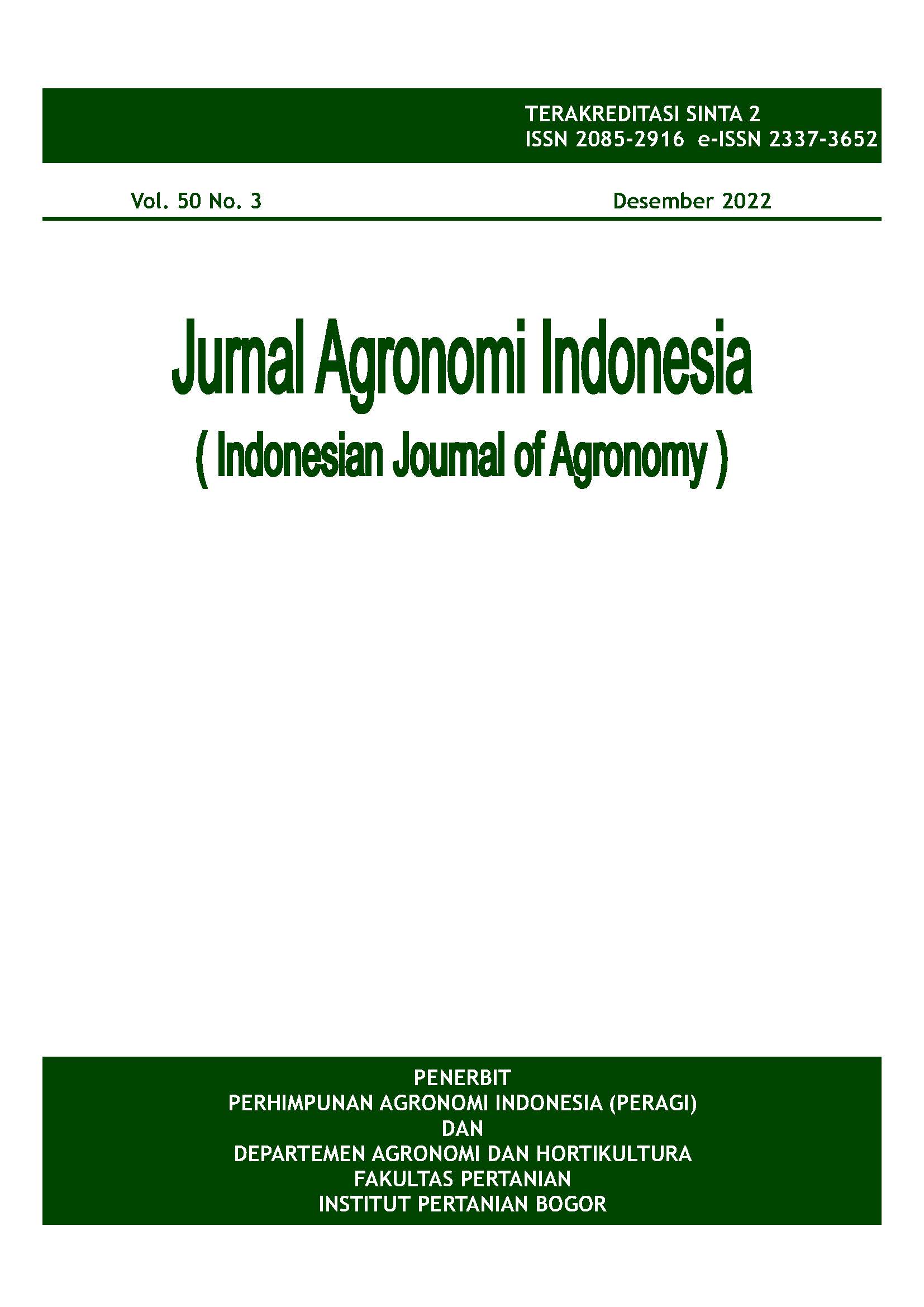Preference Bemisia tabaci Genn. and Its Relation to Leaf Anatomical and Morphological Characters of Chili (Capsicum annuum L.)
Abstract
Identification of leaf anatomical and morphological characters for selection of whitefly-resistant chili was needed to produce resistant varieties. This study aimed to determine the preferences of the whitefly Bemisia tabaci on various genotypes of chili, to identify leaf anatomical (trichome, epidermis, palisade) and morphological (leaf color, leaf thickness) characters related to selection of resistance to whitefly, to see the correlation between whitefly responses (the number of eggs and the number of early instar nymphs per plant) and leaf anatomy (trichome, epidermis, palisade) and morphology (leaf thickness). This research was conducted from August to October 2018. The chilies (Capsicum annuum L.) used were C00265, CM334, C12, Bara, Ayesha, Ungara, Kastilo, Laris, Cilibangi-2, Landung, and Yuni. The 4 WAP plants were used. The whitefly was taken from eggplant plants in Kersana District, Brebes, Central Java and propagated on tobacco and eggplant plants. The whiteflies used were non-viruliferous. The experimental design used was a completely randomized group design with genotype as the treatment. Each genotype consisted of two plants and three replicates. The result showed that there was a significant positive correlation between number of eggs and number of early instar nymphs per plant with number of trichomes, while epidermis was not correlated. Length and density of palisade were significantly negatively correlated with number of eggs and number of early instar nymphs. Leaf thickness was significantly negatively correlated with the number of early instar nymphs of the plant. Leaf color could affect whitefly attraction on chili.
Keywords: leaf thickness, number of early instar nymphs, number of eggs, palisade, trichome













